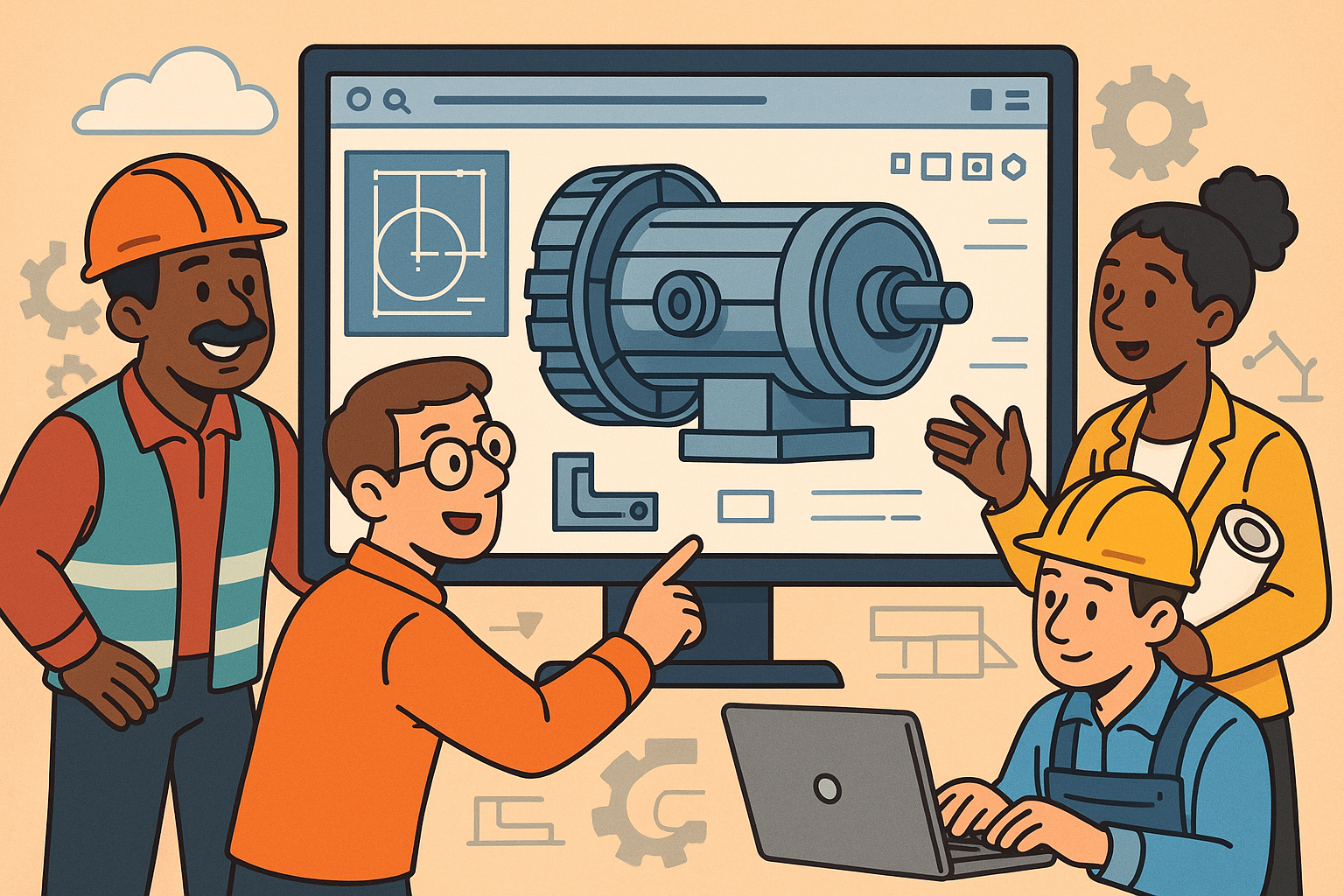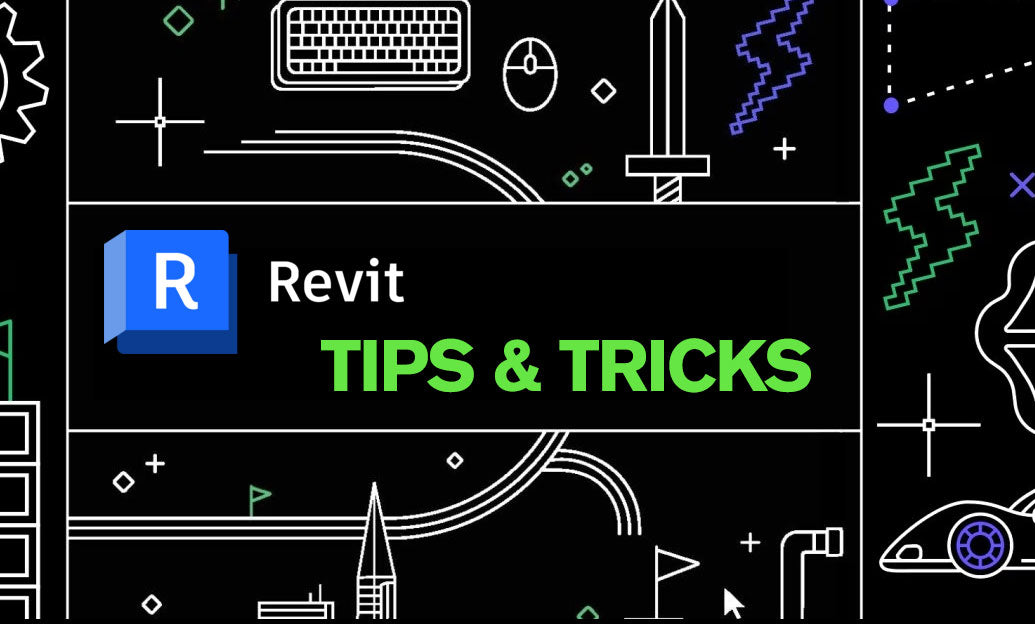Your Cart is Empty
Customer Testimonials
-
"Great customer service. The folks at Novedge were super helpful in navigating a somewhat complicated order including software upgrades and serial numbers in various stages of inactivity. They were friendly and helpful throughout the process.."
Ruben Ruckmark
"Quick & very helpful. We have been using Novedge for years and are very happy with their quick service when we need to make a purchase and excellent support resolving any issues."
Will Woodson
"Scott is the best. He reminds me about subscriptions dates, guides me in the correct direction for updates. He always responds promptly to me. He is literally the reason I continue to work with Novedge and will do so in the future."
Edward Mchugh
"Calvin Lok is “the man”. After my purchase of Sketchup 2021, he called me and provided step-by-step instructions to ease me through difficulties I was having with the setup of my new software."
Mike Borzage
Revolutionizing Engineering: Cross-Industry Integration in Design Software
July 09, 2025 14 min read


Introduction and Context
Overview of the Evolution in Design Software
Over the past few decades, design software has undergone a remarkable transformation across various industries, evolving from relatively simple drafting tools to sophisticated digital ecosystems that support complex product development and simulation. This evolution has been characterized by the rapid incorporation of advanced algorithms, real‐time rendering capabilities, and multi‐physics simulation techniques that allow designers to create and test prototypes virtually before physical production begins. In many sectors, these software solutions have not only increased overall productivity but have also led to a profound change in design processes. Notably, industries such as automotive, aerospace, and architecture now leverage technology to break design constraints and experiment with new materials and innovative structural solutions. Key milestones in this evolution include the integration of machine learning for predictive maintenance, the advent of cloud‐based collaboration environments, and the shift towards more user‐friendly interfaces that support faster learning curves and improved efficiency. The adaptability and scalability of modern design software have opened doors for interdisciplinary collaborations that once appeared infeasible. Among the critical drivers of this transformation have been the need for increased precision, reduced time-to-market, and the demand for more customizable design options. This growth is intrinsically tied to the emergence of new design paradigms that emphasize sustainability, customization, and efficiency, thereby blurring traditional boundaries between what used to be discrete industries.Rationale for Integrating Automotive Design Practices with Aerospace Software
The rationale for integrating automotive design practices with aerospace software has emerged as a compelling strategy to address some of the most demanding technical challenges faced in high-stake industries today. Automotive design, historically rooted in rapid prototyping, modular architectures, and mass production efficiencies, has developed robust procedures for stress testing, ergonomic assessments, and performance simulations. On the other hand, aerospace software has traditionally focused on extreme performance conditions, high-precision manufacturing, and complex fluid dynamic simulations. This cross-pollination offers a unique opportunity for both sectors to learn from each other and to enhance their own processes. By leveraging automotive design strategies such as rapid iteration cycles and automated optimization tools, aerospace design workflows become more agile and capable of adapting to quickly evolving requirements. In addition, blending these paradigms has paved the way for improved methodologies that incorporate robust testing and validation techniques required by stringent regulatory environments. The merging of these perspectives is aimed at achieving not only higher fidelity in simulation and modeling but also streamlining the entire design-to-production pipeline. This integrative approach is a response to global challenges such as environmental concerns, economic pressures, and the relentless pace of technological innovation that continues to reshape the competitive landscape.Introduction and Context – Expanded Exploration of Industry Challenges and Opportunities
Industry Challenges and Opportunities Driving Cross-Industry Collaboration
As global markets become increasingly interconnected, industries are recognizing that the complexity of modern engineering problems demands collaborative solutions that reach beyond conventional silos. The integration of design software between automotive and aerospace sectors is emerging as one of the most promising pathways to resolve these challenges. Numerous intersecting factors—ranging from rigorous safety and compliance standards to the rising requirement for eco-friendly technologies—are pushing companies to rethink traditional design doctrines. Economic scales, supply chain versatility, and accelerated timelines have forced engineers to consider holistic approaches that merge the best practices of both realms. One of the greatest challenges is achieving interoperability between diverse software systems; however, this challenge is gradually being met through unified data formats, comprehensive APIs, and advanced simulation models that underpin both automotive and aerospace design. Furthermore, the ability to simulate and validate across different engineering paradigms has become increasingly crucial as industries seek to create systems capable of adapting swiftly to new scientific and technical information. This convergence is essential not only to meet current demands but also to anticipate future shifts in manufacturing, which include the growing importance of additive manufacturing and real-time digital twins.Ambition for a Unified Design Approach
In light of these challenges, the ambition for a unified design approach is gaining traction across engineering disciplines. Moving beyond isolated design practices, engineers are presenting solutions that harness shared technology platforms and integrated workflows to deliver superior results. This movement is largely driven by the desire to minimize redundancies, reduce overhead costs, and ultimately achieve greater precision in performance predictions. Key elements, such as data normalization and model standardization, form the cornerstone of these transformative strategies. Additionally, the introduction of automated design verification processes and the use of **cloud-based collaboration** platforms have enabled real-time data exchange and dynamic testing environments, marking a pivotal shift in modern design methodologies. These initiatives are not without their own sets of challenges, but the potential benefits in efficiency and performance give direction to continuous improvement programs that aim to harness the full power of cross-disciplinary integration. The steady progression of these strategies is fostering a new era in which design software can truly embody and respond to the complex demands of a rapidly evolving industrial landscape.Divergent Design Requirements and Integration Challenges
Unique Technical Demands Across Automotive and Aerospace Design
The automotive and aerospace sectors exhibit uniquely challenging technical requirements that necessitate bespoke approaches to design and simulation. The automotive industry, with its focus on high-volume production and rapid turnaround times, demands design solutions that are flexible enough to allow for quick iterations, while still ensuring safety and durability. In contrast, aerospace design is subjected to exceedingly stringent conditions, where even the slightest miscalculation may result in catastrophic outcomes. These differences have given rise to divergent approaches in simulation techniques, stress analysis, and aerodynamic optimization, often requiring specialized modules within design software to address specific needs. For instance, while automotive design might prioritize the integration of ergonomic simulations and crash analysis programs, aerospace design demands exceptional precision in materials testing and thermal dynamics. Bridging these two domains demands more than a mere translation of methodologies; it requires innovative thinking about how best practices from each field can converge within a single software ecosystem. To further complicate matters, both industries deal with evolving performance expectations from increasingly sophisticated regulatory standards. Engineers must routinely employ robust, multi-faceted simulations that not only address localized performance metrics but also integrate holistic system-wide evaluations. The continuous evolution of these standards necessitates an ongoing dialogue between regulatory bodies and design software developers, ensuring that robust protocols for safety and efficiency remain at the forefront of technological evolution.Interoperability and Regulatory Challenges
Overcoming interoperability challenges remains a central focus amid the divergent technical demands of designing for both automotive and aerospace applications. Interoperability issues often stem from the use of disparate data formats, proprietary engineering tools, and varying levels of software maturity within industries that historically developed their design systems in isolation. Addressing these challenges requires a concerted effort to define and adopt standard protocols that allow seamless integration and compatibility. For example, **advanced simulation** techniques must be harmonized across different platforms in order to facilitate a common language for performance assessment and validation. Additionally, specific regulatory standards, including those concerning safety, emissions, and operational performance, differ significantly between automotive and aerospace industries. Engineers are tasked with ensuring that design software remains compliant with these standards while remaining flexible enough to adapt to updates and revisions promulgated by regulatory agencies. Mitigating these potential conflicts involves implementing systems that not only detect discrepancies early in the design process but also provide automated recommendations for realignment with industry guidelines. These efforts, underpinned by rigorous quality control measures and continuous software maintenance, form the foundation for a design environment that can reliably service multidisciplinary collaboration across high-stakes industries.Divergent Design Requirements and Integration Challenges – Simulation, Testing, and Validation
Bridging the Gap with Advanced Simulation Techniques
In the quest for higher quality and efficiency, both industries have increasingly turned to sophisticated simulation, testing, and validation techniques to bridge the gap between the divergent design philosophies of automotive and aerospace sectors. Simulation tools have evolved to such a point that they can mimic a realistic operating environment, allowing engineers to run stress tests, thermal simulations, and dynamic response analyses before physical prototypes are built. By incorporating elements like computational fluid dynamics (CFD) and finite element analysis (FEA), these tools effectively predict the performance of various components under extremely challenging conditions. As these simulations become more comprehensive and accurate, they offer a common platform on which engineers from different disciplines can collaborate to refine design parameters. High-fidelity testing environments simulate the real-world conditions encountered in aerospace missions and automotive performance demands alike, thereby allowing the design software to be calibrated and validated using data that spans multiple industries. Furthermore, these strategies create a unified testing regime that ensures the software remains versatile enough to address the wide spectrum of design demands present within both fields. The resulting environment is one where errors and discrepancies are identified early in the design process, leading to cost savings and improved overall system reliability.Addressing Regulatory and Safety Protocols Through Validation
The successful integration of design practices also depends on the effective testing and validation of models under regulatory and safety requirements. In both automotive and aerospace design spheres, ensuring compliance with industry-specific protocols is paramount. To this end, comprehensive validation frameworks are employed and integrated into the design software to monitor system performance continuously. These frameworks include automated anomaly detection, performance benchmarking against established criteria, and iterative testing that replicates safety-critical conditions. The validation process is further strengthened by the incorporation of real-time data analytics, which enables designers to adjust simulation parameters dynamically. This robust mechanism not only facilitates compliance with existing standards but also provides a vigilant safeguard against unforeseen discrepancies that might emerge during the early stages of design. By leveraging these tools, engineers can rapidly iterate on prototypes, confident that each design iteration meets both the operational and regulatory demands of automotive and aerospace domains. This integrated approach to simulation, testing, and validation is rapidly becoming a cornerstone of cross-industry design software, ensuring that products are both innovative and safe.Strategies and Tools for Cross-Industry Integration
Leveraging Advanced APIs and Modular Design Frameworks
The pathway to effective cross-industry integration is fundamentally anchored in leveraging robust technologies such as **advanced APIs** and modular design frameworks. These tools form the backbone of systems that can communicate seamlessly across different operating environments, thereby serving as the connective tissue for sophisticated design applications. Modern APIs enable disparate software systems to exchange data effortlessly, while modular design frameworks promote flexibility and scalability by breaking down complex software applications into smaller, manageable components. These modular systems are particularly beneficial when integrating automotive design practices with aerospace software, as they can be tailored and expanded to include industry-specific modules without disrupting the overall system integrity. In this context, advanced APIs serve as a bridge that enables real-time communication between modules that handle everything from 3D modeling and simulation to thermal dynamics and material stress analysis. Key benefits of these advanced integration strategies include improved workflow automation, minimized manual data entry, and more consistent adherence to design standards across different platforms. Such robust technological underpinnings are essential to ensure that disparate systems can operate in unison, ultimately enabling a more fluid and dynamic design process that spans multiple industries.Best Practices for Data Normalization and Cloud Collaboration
In conjunction with modular frameworks, best practices revolving around data normalization and the adoption of cloud-based collaboration environments are proving to be pivotal for achieving true cross-industry integration. Data normalization processes ensure that multiple sources of design data are converted to a common standard, thereby reducing latency and potential errors when the information is exchanged between disparate systems. Such practices lay a robust foundation for effective **real-time collaboration** and facilitate smoother data flow across diverse engineering domains. Cloud-based platforms offer another layer of integration by enabling remote access to essential design data, fostering a collaborative environment where updates can be shared instantly among global teams. Key benefits of cloud integration include scalable storage solutions, secure data-sharing protocols, and the ability to integrate with cutting-edge technologies like AI-driven data analysis. Additionally, these platforms play a critical role in supporting continuous integration and deployment pipelines, which are essential for maintaining the agility and responsiveness required in both automotive and aerospace design processes. The benefits extend to enhanced project management and reduce the risk of data fragmentation, all of which contribute to a more efficient and adaptable design environment.Strategies and Tools for Cross-Industry Integration – The Role of Emerging Technologies
Utilizing Cloud-Based Platforms and AI-Driven Optimization
Emerging technologies such as cloud computing and artificial intelligence are at the forefront of revolutionizing cross-industry integration within design software. Cloud-based platforms allow teams to collaborate and share updates in real-time, bridging geographical gaps and facilitating synchronized workflows that are critical in fast-paced production environments. The capability to store, analyze, and exchange vast amounts of data in a secure, scalable manner enables engineers across both automotive and aerospace sectors to work on the same platform without the traditional impediments of legacy systems. Furthermore, AI-driven optimization tools can automatically generate design alternatives, perform rapid simulations, and identify optimal configurations that meet stringent functional and regulatory requirements. By harnessing AI, design software can now offer predictive analytics that not only accelerate the decision-making process but also help uncover latent performance issues that might have otherwise gone unnoticed. This convergence of cloud-based collaboration and AI-driven methodologies results in a highly adaptive design environment that is both robust and forward-thinking. Engineers are thereby empowered to experiment with innovative design solutions with confidence, knowing that the underlying systems are capable of adapting to rapidly changing project demands. Such dynamic adaptability is essential in industries where precision and reliability are of utmost importance.Additional Tools for Modular Data Exchange and Real-Time Monitoring
Complementing these technologies are advanced methodologies for modular data exchange and real-time monitoring, which further streamline the integration process. Modular data exchange protocols allow different design subsystems to communicate through common data formats and standardized interfaces. This approach is essential in environments where multiple engineering teams collaborate on a unified project, as it reduces bottlenecks associated with data translation and reformatting. Moreover, the implementation of real-time monitoring tools ensures that any deviations from expected performance metrics are immediately identified and addressed. This proactive detection of issues is particularly critical when dealing with high-value aerospace components or high-performance automotive designs, where even slight variations can have significant repercussions. The adoption of these strategies not only elevates operational efficiency but also enhances the overall design quality by ensuring that every phase of the development lifecycle is closely monitored and managed. The synergy created by combining modular frameworks, cloud-based data sharing, and AI-driven optimization encapsulates the future of design software integration by encouraging a collaborative, efficient, and forward-looking approach to meeting complex project requirements.Future Perspectives and Emerging Trends
Transformative Impact of Integrating Automotive Insights into Aerospace Innovation
Looking forward, the cross-industry integration of design software is set to usher in a new era of innovation, where insights from automotive design practices profoundly transform the way aerospace software is developed and utilized. By incorporating rapid prototyping, iterative design cycles, and efficient performance simulations from the automotive world, aerospace design processes can be streamlined considerably, resulting in substantial improvements in both productivity and responsiveness. The melding of these methodologies leads to a more robust system where flexibility meets precision, ensuring that critical engineering requirements are met without sacrificing innovation speed. The utilization of evolving technologies, such as **digital twins** and predictive analytics, facilitates the real-time adaptation of design parameters in response to environmental or operational changes. This not only optimizes performance under dynamic conditions but also ensures that aerospace designs remain viable in the face of evolving regulatory and safety standards. Moreover, the insights gained from automotive practices offer new perspectives on risk management and cost reduction without compromising functional integrity. The future of cross-industry design integration depends heavily on the continuous evolution of these collaborative concepts, making it imperative that both industries maintain open channels of communication and knowledge-sharing in order to harness the full potential inherent in these innovative approaches.Emerging Design Methodologies and Workflow Automation Trends
In parallel with the transformative impact mentioned above, emerging design methodologies and workflow automation trends are poised to redefine the landscape of engineering design. Automation in design workflows, driven by artificial intelligence and advanced analytics, is enabling unprecedented levels of efficiency and precision. Innovations such as automated geometry optimization, **AI-driven optimization**, and integrated workflow management systems ensure that routine tasks are systematically handled, thereby freeing up valuable human resources for creative problem solving and strategic decision-making. Such automation not only accelerates the design process but also minimizes human error, ensuring that each iteration meets high-quality standards. Further, these emerging methodologies advocate for a more data-driven approach to design, where insights extracted from historical performance data can be leveraged to predict future trends and inform strategic decisions. This evolution is supported by robust cloud-based platforms that facilitate continuous integration, ensuring that the latest design data is always available to every team member regardless of their location. As these trends continue to gain momentum, the potential for cross-industry partnerships to drive sustainable and efficient design practices will only increase, setting a foundation for innovative solutions that are both resilient and adaptable to future challenges.Future Perspectives and Emerging Trends – Strategies for Adaptive System Improvements
Building Adaptive Systems for Continuous Learning
As emerging trends point toward ever more complex and interconnected design environments, the development of adaptive systems capable of continuous learning and evolution has become paramount. These systems are expected to harness the power of machine learning and data analytics to not only refine design processes in real-time but also to predict and adjust to emerging patterns of structural and operational behavior. In a domain where automotive design has long championed iterative development and rapid prototyping, the aerospace sector is beginning to incorporate similar techniques to handle the increasing complexity of modern engineering challenges. This strategic shift promotes an environment where software systems are not static tools, but rather dynamic frameworks that continuously evolve based on accumulated knowledge and performance feedback. Central to this evolution is the emphasis on creating feedback loops, where each design iteration provides valuable data that can be used to optimize future models. Moreover, the incorporation of advanced analytical tools ensures that potential inefficiencies or design discrepancies are flagged early in the development cycle, thereby reducing both time and cost. The concept of continuous improvement, deeply embedded in the culture of automotive manufacturing, is now being effectively translated into aerospace software development, marking a significant milestone in the journey toward fully integrated, adaptive engineering ecosystems.Strategies for Future Cross-Industry Collaboration
The future of cross-industry collaboration is expected to rely on comprehensive strategies that not only foster innovation but also promote sustainable practices. In order to fully realize the benefits of integrating design software across automotive and aerospace sectors, it is critical to establish clear communication channels, shared data standards, and joint research initiatives that can lead to breakthrough technologies. Emphasis on **interdisciplinary collaboration** will play a pivotal role in this integration, allowing teams to address multifaceted challenges with holistic solutions. Key strategies include the establishment of formal governance structures to coordinate cross-industry efforts, the development of unified training programs to bridge knowledge gaps, and the creation of flexible software solutions that can adapt to the specific needs of each industry segment. Additionally, investing in research and development teams that specialize in emerging technologies such as digital twins, AI, and big data analytics will ensure that the integrated design environment is both innovative and resilient. These strategies will lead to a collaborative ecosystem where feedback from each industry not only improves existing processes but also contributes to the development of new paradigms that redefine standards of efficiency, safety, and sustainability.Conclusion
Recap of Cross-Industry Integration and Its Importance
In summary, the convergence of automotive and aerospace design practices through advanced software integration represents a paradigm shift with far-reaching implications. The evolution of design software has enabled industries to overcome traditional boundaries, using robust simulation, testing, and validation tools to streamline complex workflows while ensuring compliance with rigorous regulatory standards. By leveraging **advanced APIs**, modular design frameworks, and cloud-based collaboration environments, engineers are now better equipped to address the unique technical demands of their respective fields. This blend of distinct design methodologies not only results in enhanced performance and efficiency, but also fosters a culture of continuous improvement and adaptive learning that is key to sustaining innovation in a rapidly changing world. The integration of insights from both sectors has already begun to transform product development strategies, creating new opportunities for cost reduction, risk management, and performance optimization.Final Thoughts on the Future Impact of Interdisciplinary Collaboration
As we look to the future, it is clear that cross-industry integration will continue to play a pivotal role in shaping the next generation of design software. The merging of automotive and aerospace design paradigms, bolstered by emerging technologies such as **AI-driven optimization** and digital twins, signals a move towards more intelligent, automated, and efficient engineering ecosystems. Such interdisciplinary collaboration will not only drive forward advances in sustainability and design excellence but will also empower industries to rapidly adapt to evolving market demands and technological breakthroughs. Strategies that emphasize data normalization, real-time monitoring, and workflow automation are already demonstrating tangible benefits, setting new benchmarks for performance and safety. Ultimately, the future of innovation lies in our ability to harness the synergies of different design disciplines and leverage advanced computational tools to create products that are both cutting-edge and resilient. In this shared pursuit of excellence, continuous improvement, adaptive systems, and mutual learning will be the cornerstones of success, ensuring that design software remains a key enabler of progress in an increasingly complex global landscape.Also in Design News

Cinema 4D Tip: Matrix-Driven Instancing for High-Performance Scattering
December 20, 2025 2 min read
Read More
V-Ray Tip: V-Ray Anisotropy Techniques for Brushed Metals and Hair
December 20, 2025 2 min read
Read More
Revit Tip: Revit Nested Tagging: Shared Nested Families and Roll-Up Parameters
December 20, 2025 2 min read
Read MoreSubscribe
Sign up to get the latest on sales, new releases and more …


